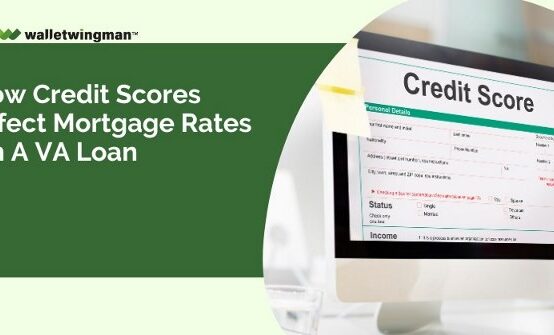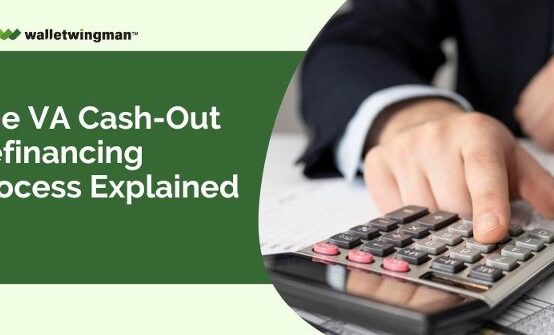The VA loan program removes one of the biggest obstacles to homeownership: the down payment. By allowing eligible home buyers to finance 100% of the purchase price, this program eliminates the need for a down payment. This greatly reduces the home buyer’s out-of-pocket expense.
But there are other ways to save money when using a VA loan to buy a house. Below, you will find a variety of strategies that could help you save money in both the short and long term.

8 Ways to Save Money With a VA Loan
There are different ways to save money when using a VA-guaranteed mortgage loan. Some of these money-saving opportunities occur on the front end of the process when you first take out a VA home loan to buy a house. Other strategies can help you save money over time during your years of homeownership.
For instance, making a down payment requires more money out of pocket upfront, but it would also reduce your monthly payments and total interest costs.
Not all of the strategies listed will apply to you. This article aims to show you as many money-saving strategies as possible. Considering your current financial situation and long-term goals, this will help you determine which ones work for you.
1. Make a down payment, even if it’s not required
VA loans allow borrowers to avoid making a down payment with the VA loan no down payment option. But for those who can afford to put some money down, it could significantly reduce interest costs over the life of the loan. Even a small down payment can make a significant difference regarding long-term savings.
For example, a $400,000 VA loan with a 30-year term and a VA loan interest rate of around 7% will have a monthly payment of around $2,322. But if the borrower made a 5% down payment of $20,000, the monthly payment would drop to around $2,228, saving them $94 per month.
You don’t have to make a down payment when using a VA loan. That’s one of the significant benefits this program offers. But you should consider how a down payment might benefit you over the long term in terms of saving money.

2. Improve your credit score to get a lower interest rate
Borrowers with good credit scores tend to qualify for lower mortgage rates, a factor true for VA loan credit score requirements and conventional loans. When you secure a lower interest rate, you are reducing your monthly payments and your long-term interest costs. So, this is another way to save money over the long term when using a VA loan to buy a house.
What’s the best way to boost your credit score?
First, be sure to pay all your bills on time going forward. Your “payment history” of a loan affects your credit score more than any other factor. You could also boost your score by reducing your credit card usage and balances.
Focusing on the fact that credit is among the considerations that the lender will look at before they offer you a suitable loan term, you must understand the VA loan credit requirements.
Often, lenders seek a minimum score for VA loans, debt-to-income ratio, and job history. Achieving these VA home loan requirements will boost your chances of approval and secure a more advantageous instrument rate.
So, it’s essential to check and deal with the possible weaknesses in meeting these criteria before applying for a VA loan.
3. Get a VA funding fee exemption, if applicable
Most borrowers who use the VA loan program have to pay a funding fee. This one-time fee can be paid upfront or financed into the loan. Funding fees help keep the VA loan program operating while reducing the burden on taxpayers.
However, certain borrowers are exempt from the VA loan funding fee, which could save them money over time. Veterans with a service-connected disability, Purple Heart recipients, and other specific groups are exempt from paying a funding fee.
Moreover, the borrowers should work on their VA funding fee exemption eligibility and other strategies to grow this saving potential.
Purple Heart recipients and those with service-connected disabilities may not be the only target groups who benefit from such an exemption. This is because surviving spouses of veterans who lost their lives in service or due to service-related disabilities may also be such recipients.
Knowing and employing those exemptions is the primary solution to the low initial costs. The process can lead to the long-term financial well-being of veterans, who then can fully enjoy the benefits they get from the VA loans program.

4. Consider using mortgage discount points
Mortgage discount points (or prepaid interest) could help you save money on your VA loan over the long term. With this strategy, you pay a little more money upfront in exchange for a lower rate.
Securing a lower mortgage rate could save you a significant amount of money over time. Each discount point equals 1% of the loan amount and could lower your interest rate by 0.25%.
The amount of money you save on your VA loan will depend on the interest rate you get and the length of time you stay in your home. If you plan to stay in your home for a long time, paying for points can save you significant money on interest.
Moreover, borrowers should determine whether the discount points payoff is higher than the other investment opportunities. Sometimes, the funds that the people would have used by the aforementioned points can earn a better return when invested elsewhere.
Borrowers must also consider their financial targets, including current and future liquidity needs, before buying discount points.
Despite the long-term benefits they can include, it is pivotal to hitting the right balance between your short and long-term objectives and keeping you focused on the short run.
Be prudent in the analysis of pros and cons and seek help from an expert if it is needed. They can then enter into VA loan transactions with a clear understanding that mortgage discount points are a viable choice for saving money.
5. Choose a shorter loan term
A loan with a short term will mean higher monthly installments, but you’ll also pay less interest over the life of the loan.
For example, a $400,000 VA loan with a 30-year term and a 5% interest rate could have a monthly payment of roughly $2,126. However, by using 15 years instead, the monthly payment could drop to around $3,225. A borrower in this situation could save about $200,000 in total interest costs over the life of the loan.
It’s important to note that choosing a shorter loan term not only accelerates the payoff of the loan but also builds home equity at a faster rate. This increased equity can provide homeowners with greater financial stability and flexibility in the future, such as when considering home equity loans or lines of credit.
Additionally, shorter loan terms typically come with lower interest rates, further enhancing the potential for long-term savings. Therefore, while the higher monthly payments may seem daunting initially, the overall financial benefits and reduced interest costs make opting for a shorter loan term a prudent financial decision for many VA loan borrowers.
6. Consider using an ARM loan
If you’re going to use a VA loan to buy a house but only plan to stay in the home for 3 to 7 years, you might also consider using an adjustable-rate mortgage (ARM).
Generally speaking, ARM loans offer a lower mortgage rate during the first few years when compared to the more popular 30-year fixed-rate home loan. Just know that the interest rate on an ARM loan could increase after those first few years.
However, it’s crucial for borrowers to carefully assess their financial situation and long-term plans before opting for an ARM loan. Since adjustable-rate mortgages carry the risk of interest rate fluctuations, borrowers should consider factors such as potential changes in income, future housing market conditions, and their ability to manage increased payments if rates rise.
Additionally, borrowers should have a clear understanding of the loan terms, including the initial fixed-rate period, adjustment intervals, and caps on interest rate increases, to make an informed decision aligned with their financial goals and risk tolerance.

7. Negotiate closing costs
Closing costs can add up quickly, but many of them are negotiable. VA loan borrowers can negotiate with sellers to cover part or all of the closing costs. This can reduce the upfront expenses associated with buying a home.
But check with your real estate agent before requesting a closing cost contribution from the seller. In a hot real estate market, such a request could work against you.
8. Keep an eye on interest rates going forward
Mortgage rates change constantly, including VA home loan interest rates. And while they’ve risen over the past couple of years, some analysts expect rates to ease a bit over the coming months. Declining mortgage rates give homeowners the opportunity to save money by refinancing.
When you refinance, you replace your ongoing mortgage loan with a new one, ideally securing a lower rate in the process. Homeowners who have a VA loan can use the “streamline” refinancing program to reduce paperwork hassles and skip the home appraisal.


 A Borrower’s Guide to the VA Construction Loan
A Borrower’s Guide to the VA Construction Loan  How to Buy a Condo Unit with a VA Mortgage Loan
How to Buy a Condo Unit with a VA Mortgage Loan  How Credit Scores Affect Mortgage Rates on a VA Loan
How Credit Scores Affect Mortgage Rates on a VA Loan  How Much Can I Borrow When Using a VA Loan to Buy a House?
How Much Can I Borrow When Using a VA Loan to Buy a House?  The VA Cash-Out Refinancing Process Explained
The VA Cash-Out Refinancing Process Explained  The Pros and Cons of 15-Year vs 30-year VA loans
The Pros and Cons of 15-Year vs 30-year VA loans 